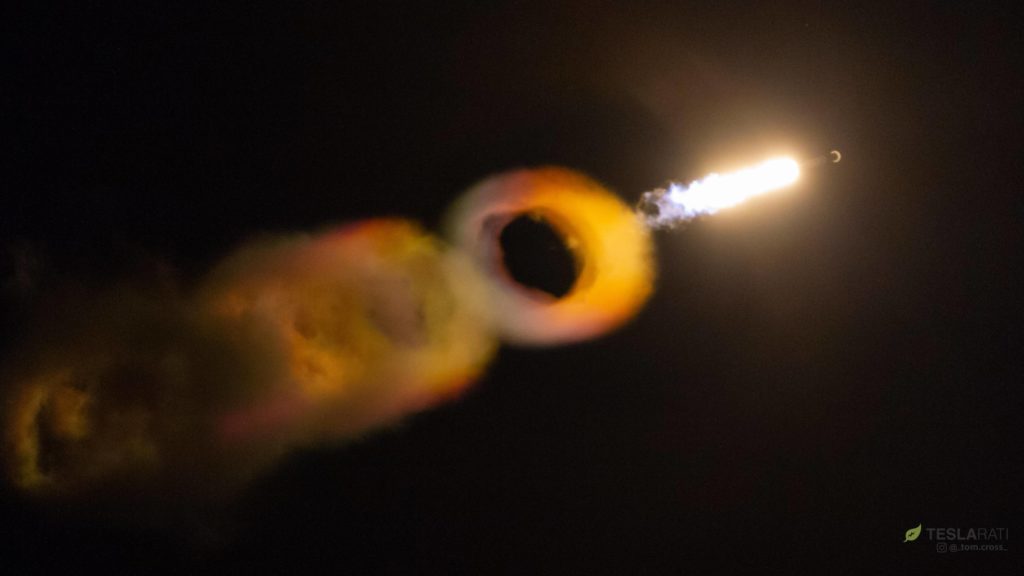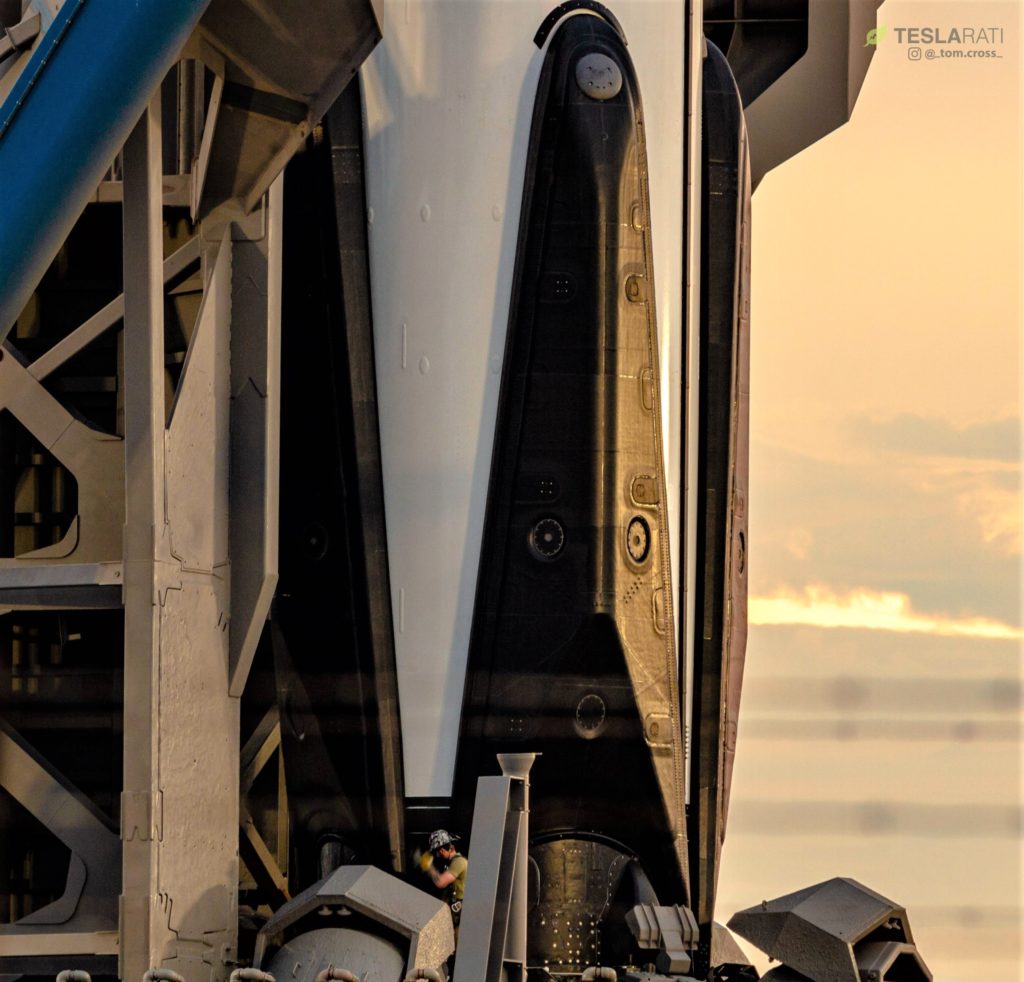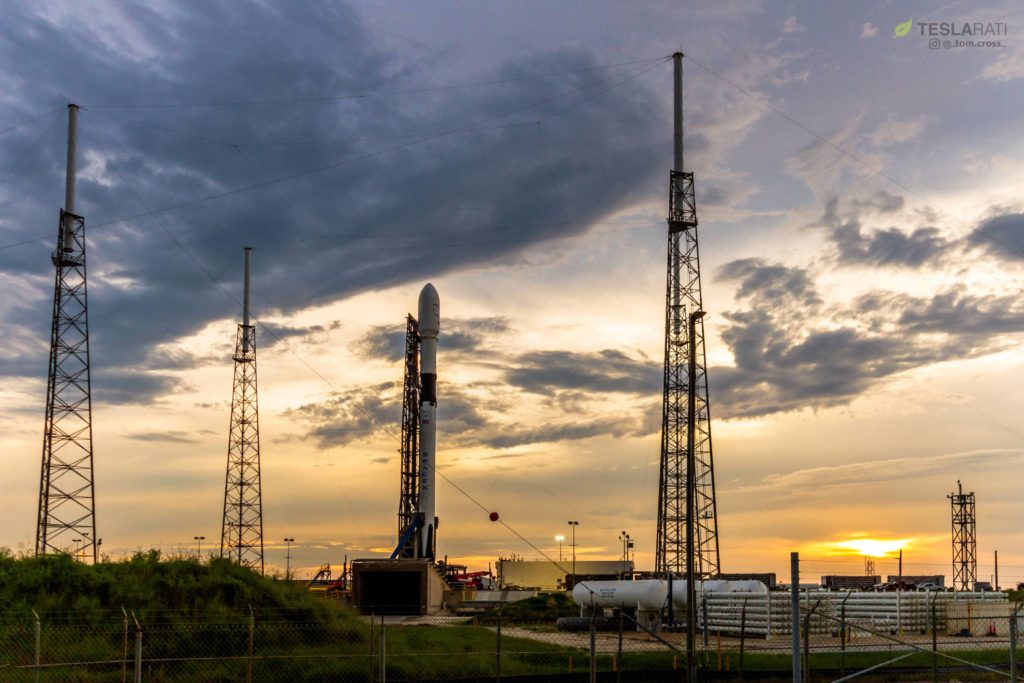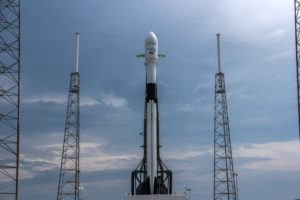
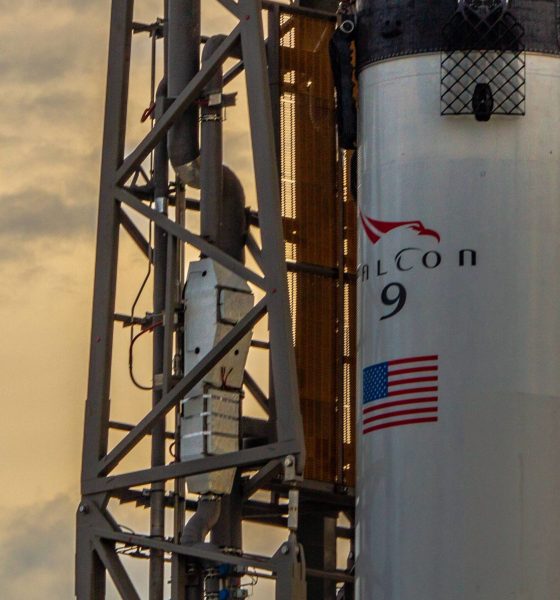
News
SpaceX delivers largest commercial satellite in kick off of Falcon 9 marathon
SpaceX has successfully completed its 13th launch of 2018, kicking off a marathon of three new Falcon 9 Block 5 booster debuts with the launch of the Telstar 19V communications satellite, potentially breaking the record for the largest commercial satellite ever launched at 7000 kg (15,500 lb).
Despite the heft of its payload and partially thanks to a slightly lower parking orbit for the satellite, Falcon 9 booster B1047 – the second Block 5 booster to roll off the assembly line – managed to successfully land aboard the autonomous spaceport drone ship (ASDS) Of Course I Still Love You (OCISLY), stationed approximately 650 km (400 mi) off the Florida coast at launch time.
While the booster was unable to maintain a live video feed through its high-speed reentry and Atlantic landing, SpaceX’s cameras on OCISLY managed to reconnect a few seconds after touchdown to show the 50-meter (160-foot) tall rocket safely resting on the drone ship. As the webcast host noted, Falcon 9 Block 5 features a number of prominent upgrades designed to enable levels of reusability and reliability essentially unprecedented in the world of orbital rocketry.
- B1047 created an extraordinary ring vortex rainbow as it smashed through Max Q, the point of highest aerodynamic stress on the rocket. (Tom Cross)
- B1047 before the launch of Telstar 19V. (Tom Cross)
- B1047 before the launch of Telstar 19V. (Tom Cross)
- B1047 before the launch of Telstar 19V. (Tom Cross)
Rocket trials
Now more than two months after the first Block 5 booster’s – B1046 – debut in May 2018, the software engineer hosting SpaceX’s Telstar 19V webcast was likely speaking more from a place of experience than of hope. Per CEO Elon Musk’s press call just prior to Block 5’s debut, he noted that SpaceX intended to conduct an extensive analysis of that pathfinder booster, including significant disassembly and perhaps some limited destructive testing of certain critical or high-risk components. Musk didn’t expect B1046 to fly for at least another “couple of months”.
This is critical because SpaceX’s manifest over the next several weeks is fairly aggressive – Iridium-7 is scheduled to lift off from Vandenberg, CA three days from today (July 25th), the next Florida launch is aiming for a static fire next weekend and a launch NET 1:19 am EDT August 2, and the second imminent Florida mission is penciled in for launch NET 11:35 pm EDT August 17. Those rapid-fire Florida launches will push both SpaceX’s pad and drone ship turnaround capabilities to their limits, requiring almost non-stop work to ensure both are available for the next mission in two weeks or less.
- SpaceX’s West Coast landing zone is preparing for its debut, currently NET October 6th 2018. (Pauline Acalin/Teslarati)
- Falcon 9 B1047 prepped for launch at Pad 40, July 21. (SpaceX)
- Prior to liftoff, Falcon 9 and Falcon Heavy are held down by massive “hold-down clamps” at the rocket’s base. Even after engine ignition, those clamps only release once the flight computer decides that the rocket is healthy. (Pauline Acalin)
Not to be (at least relatively) one-upped, SpaceX’s Vandenberg launch pad – known as SLC-4E – is scheduled to push its own turnaround limits by flying two missions in roughly 40 days, just shy of the current SpaceX record of 36 days between launches. Perhaps more excitingly, that September 4 SAOCOM 1A mission looks like a prime candidate for the debut of SpaceX’s yet-unused Californian landing zone, barely spitting distance from the SLC-4E launch pad.
Still, the question remains: what boosters are going to launch these four missions?
- B1051 is not believed to have left the Hawthorne, CA factory yet, and has been stated by NASA to be reserved for the first uncrewed Crew Dragon mission (DM-1), unlikely to occur before Q4 2018.
- B1050 is currently on-stand in McGregor, TX and is likely to be shipped to a launch pad within a week or two.
- B1049 was almost certainly shipped to Florida to support either of the two upcoming August launches.
- B1048 will launch Iridium-7 on July 25, land on Just Read The Instructions, and likely remain in California for future VAFB missions.
- B1047 just successfully launched Telstar 19V (July 22) and will be brought back to Port Canaveral over the next several days before heading to one of SpaceX’s Florida refurbishment facilities, presumably to prepare for an imminent future launch.
- B1046 is likely disassembled in Hawthorne, CA, unable to support a launch for another few weeks – perhaps it’s nearly ready, however
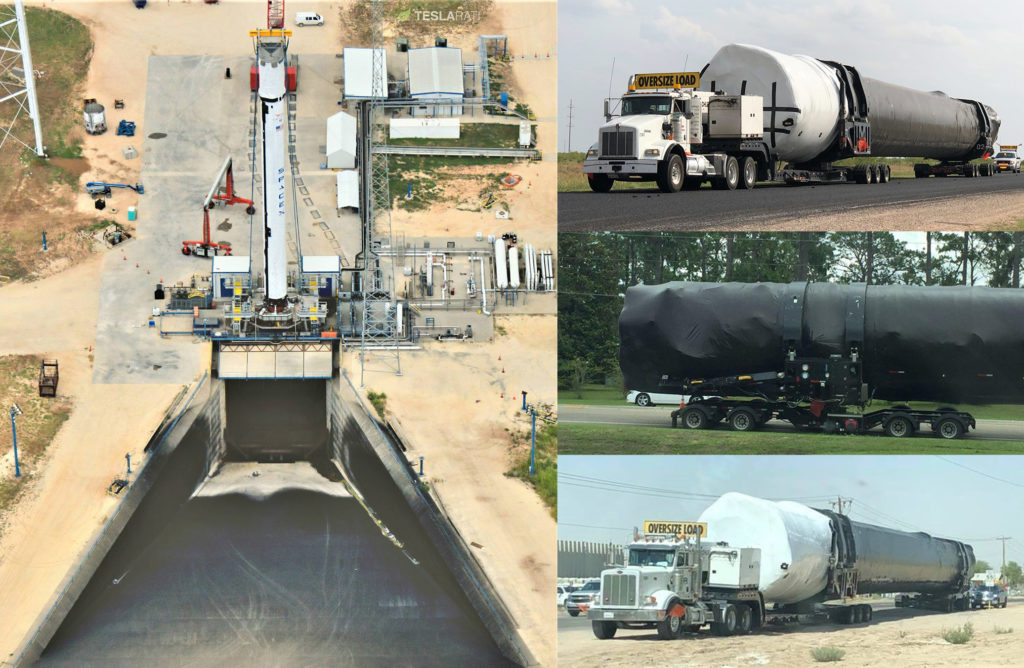
Three Falcon 9 boosters captured in various states of transport and testing over the last six weeks, two of which are B1047 and B1048. (Teslarati/Tesla Motors Club/Reddit/Facebook)
Put simply, it seems almost impossible for SpaceX to accomplish its ambitious manifest over the next 4-6 weeks without reusing a freshly-recovered Falcon 9 Block 5 booster. B1046 is a possibility, as is B1047 or B1048, although the latter two options would smash SpaceX’s previous record for Falcon booster turnaround (~70 days) by more than half, requiring in a return to shore, refurbishment or nondestructive analysis, and preparation for a static fire in as few as ~14-21 days.
Regardless, B1047’s successful Telstar 19V launch and landing have kicked off what is bound to be an extremely exciting period for SpaceX and its aspirations of highly-reusable rocketry.
Follow us for live updates, peeks behind the scenes, and photos from Teslarati’s East and West Coast photographers
Teslarati – Instagram – Twitter
Tom Cross – Twitter
Pauline Acalin – Twitter
Eric Ralph – Twitter

News
SpaceX shades airline for seeking contract with Amazon’s Starlink rival

SpaceX employees, including its CEO Elon Musk, shaded American Airlines on social media this past weekend due to the company’s reported talks with Amazon’s Starlink rival, Leo.
Starlink has been adopted by several airlines, including United Airlines, Qatar Airways, Hawaiian Airlines, WestJet, Air France, airBaltic, and others. It has gained notoriety as an extremely solid, dependable, and reliable option for airline travel, as traditional options frequently cause users to lose connection to the internet.
Many airlines have made the switch, while others continue to mull the options available to them. American Airlines is one of them.
A report from Bloomberg indicates the airline is thinking of going with a Starlink rival owned by Amazon, called Leo. It was previously referred to as Project Kuiper.
American CEO Robert Isom said (via Bloomberg):
“While there’s Starlink, there are other low-Earth-orbit satellite opportunities that we can look at. We’re making sure that American is going to have what our customers need.”
Isom also said American has been in touch with Amazon about installing Leo on its aircraft, but he would not reveal the status of any discussions with the company.
The report caught the attention of Michael Nicolls, the Vice President of Starlink Engineering at SpaceX, who said:
“Only fly on airlines with good connectivity… and only one source of good connectivity at the moment…”
CEO Elon Musk replied to Nicolls by stating that American Airlines risks losing “a lot of customers if their connectivity solution fails.”
American Airlines will lose a lot of customers if their connectivity solution fails
— Elon Musk (@elonmusk) December 14, 2025
There are over 8,000 Starlink satellites in orbit currently, offering internet coverage in over 150 countries and territories globally. SpaceX expands its array of satellites nearly every week with launches from California and Florida, aiming to offer internet access to everyone across the globe.
Currently, the company is focusing on expanding into new markets, such as Africa and Asia.
News
Tesla Model Y Standard stuns in new range test, besting its Premium siblings
Tesla’s newer vehicles have continued to meet or exceed their EPA estimates. This is a drastic change, as every 2018-2023 model year Tesla that Edmunds assessed did not meet its range estimates.
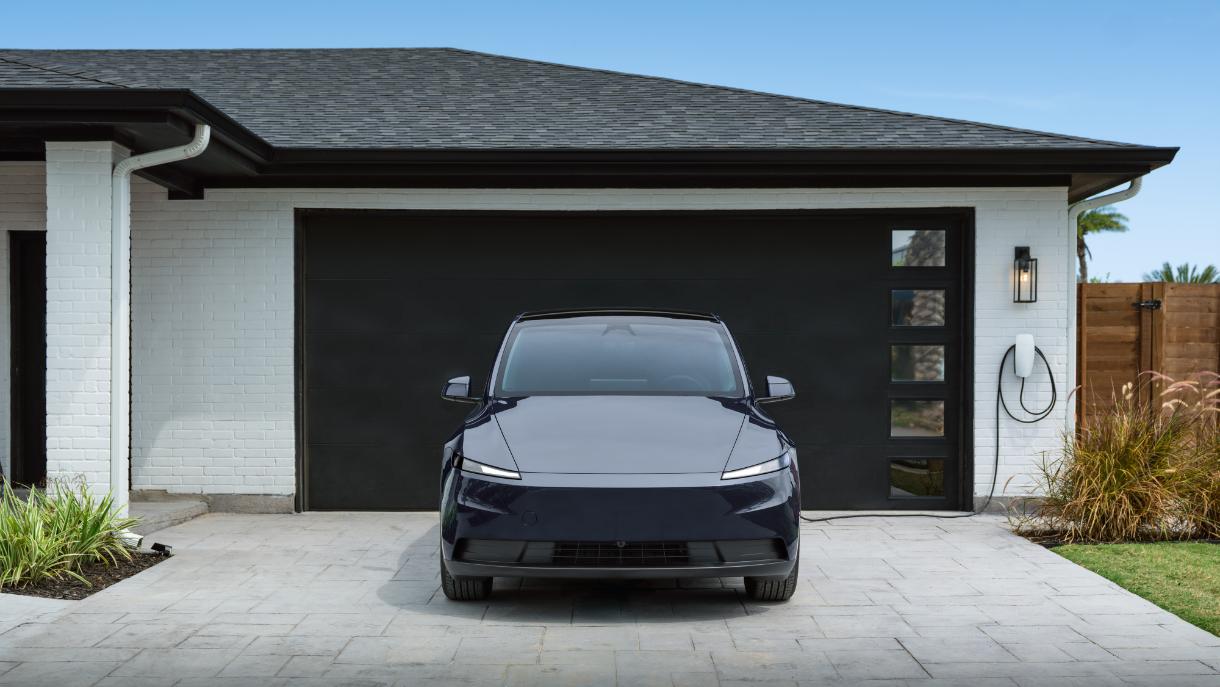
The Tesla Model Y Standard stunned in a new range test performed by automotive media outlet Edmunds, besting all of its Premium siblings that are more expensive and more luxurious in terms of features.
Testing showed the Model Y Standard exceeded its EPA-estimated range rating of 321 miles, as Edmunds said it is the “longest-range Model Y that we’ve ever put on our loop.” In the past, some vehicles have come up short in comparison with EPA ranges; for example, the Model Y’s previous generation vehicle had an EPA-estimated range of 330 miles, but only drove 310.
Additionally, the Launch Series Model Y, the first configuration to be built in the “Juniper” program, landed perfectly on the EPA’s range estimates at 327 miles.
It was also more efficient than Premium offerings, as it utilized just 22.8 kWh to go 100 miles. The Launch Series used 26.8 kWh to travel the same distance.
It is tested using Edmunds’ traditional EV range testing procedure, which follows a strict route of 60 percent city and 40 percent highway driving. The average speed throughout the trip is 40 MPH, and the car is required to stay within 5 MPH of all posted speed limits.
Each car is also put in its most efficient drive setting, and the climate is kept on auto at 72 degrees.
“All of this most accurately represents the real-world driving that owners do day to day,” the publication says.
With this procedure, testing is as consistent as it can get. Of course, there are other factors, like temperature and traffic density. However, one thing is important to note: Tesla’s newer vehicles have continued to meet or exceed their EPA estimates. This is a drastic change, as every 2018-2023 model year Tesla that Edmunds assessed did not meet its range estimates.
Tesla Model Y Standard vs. Tesla Model Y Premium
Tesla’s two Model Y levels both offer a great option for whichever fits your budget. However, when you sit in both cars, you will notice distinct differences between them.
The Premium definitely has a more luxurious feel, while the Standard is stripped of many of the more premium features, like Vegan Leather Interior, acoustic-lined glass, and a better sound system.
You can read our full review of the Model Y Standard below:
Tesla Model Y Standard Full Review: Is it worth the lower price?
News
Xpeng CEO: Tesla FSD 14.2 has developed “near-Level 4” performance
While acknowledging that imperfections remain, the Xpeng CEO said FSD’s current iteration significantly surpasses last year’s capabilities.
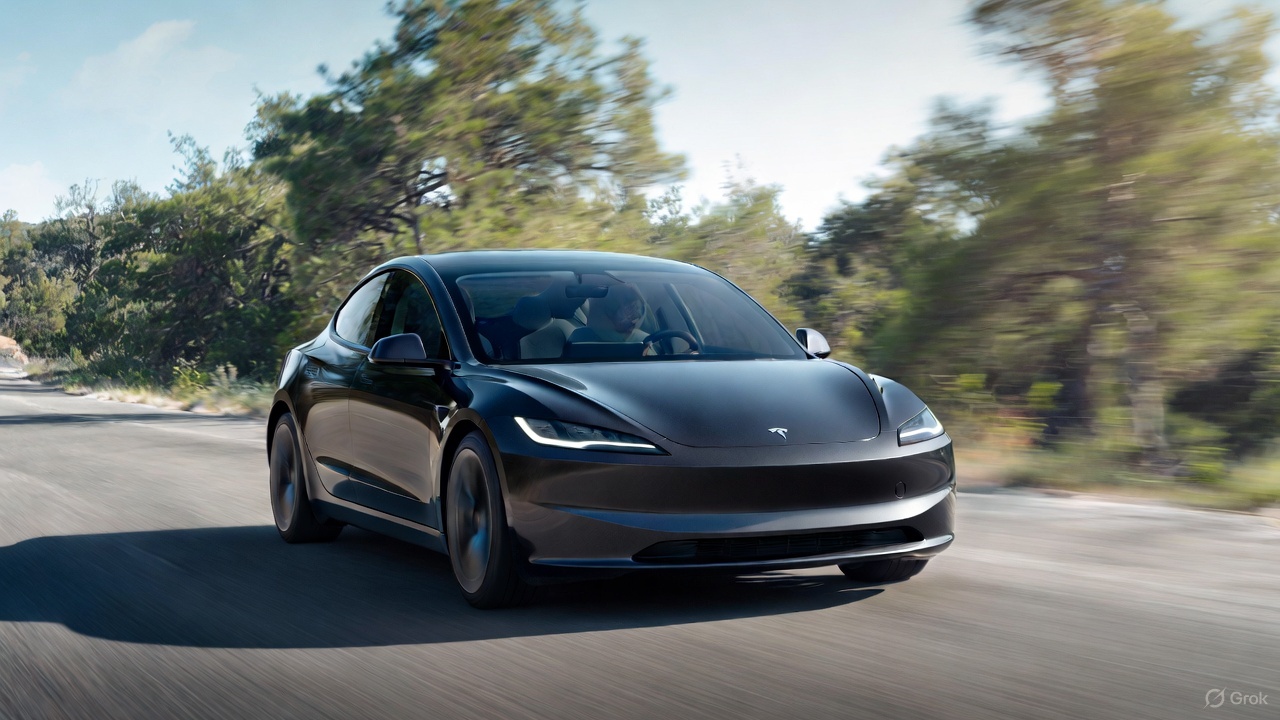
Xpeng CEO He Xiaopeng has offered fresh praise for Tesla’s Full Self-Driving (FSD) system after revisiting Silicon Valley more than a year after his first hands-on experience.
Following extended test drives of Tesla vehicles running the latest FSD software, He stated that the system has made major strides, reinforcing his view that Tesla’s approach to autonomy is indeed the proper path towards autonomy.
Tesla FSD closing in on Level 4 driving
During his visit, He test-drove a Tesla equipped with FSD V14.2. He also rode in a Tesla Robotaxi. Over roughly five hours of driving across Silicon Valley and San Francisco, He said both vehicles delivered consistent and reassuring performance, a notable improvement from his experience a year earlier.
According to He, Tesla’s FSD has evolved from a smooth Level 2 advanced driver assistance system into what he described as a “near-Level 4” experience in terms of capabilities. While acknowledging that imperfections remain, the Xpeng CEO said FSD’s current iteration significantly surpasses last year’s capabilities. He also reiterated his belief that Tesla’s strategy of using the same autonomous software and hardware architecture across private vehicles and robotaxis is the right long-term approach, allowing users to bypass intermediate autonomy stages and move closer to Level 4 functionality.
He previously tested Tesla’s FSD V12.3.6 and Waymo vehicles in California in mid-2024, noting at the time that Waymo performed better in dense urban environments like San Francisco, while Tesla excelled in Silicon Valley and on highways.
Xpeng’s ambitious autonomy roadmap and internal challenge
The Silicon Valley visit also served as a benchmark for Xpeng’s own autonomy ambitions. He stated that Xpeng is looking to improve its VLA autonomous driving system to match the performance of Tesla’s FSD V14.2 within China by August 30, 2026. Xpeng is poised to release its VLA 2.0 smart driving software next quarter, though He cautioned that the initial version will not be able to match FSD V14.2’s capabilities, as noted in a CNEV Post report.
He also added a personal twist to the goal, publicly challenging Xpeng’s autonomous driving team. If the performance target is met by the 2026 deadline, the CEO stated that he will approve the creation of a Chinese-style cafeteria for Xpeng’s Silicon Valley team. If not, Liu Xianming, head of Xpeng’s autonomous driving unit, has pledged to run naked across the Golden Gate Bridge, He noted.
